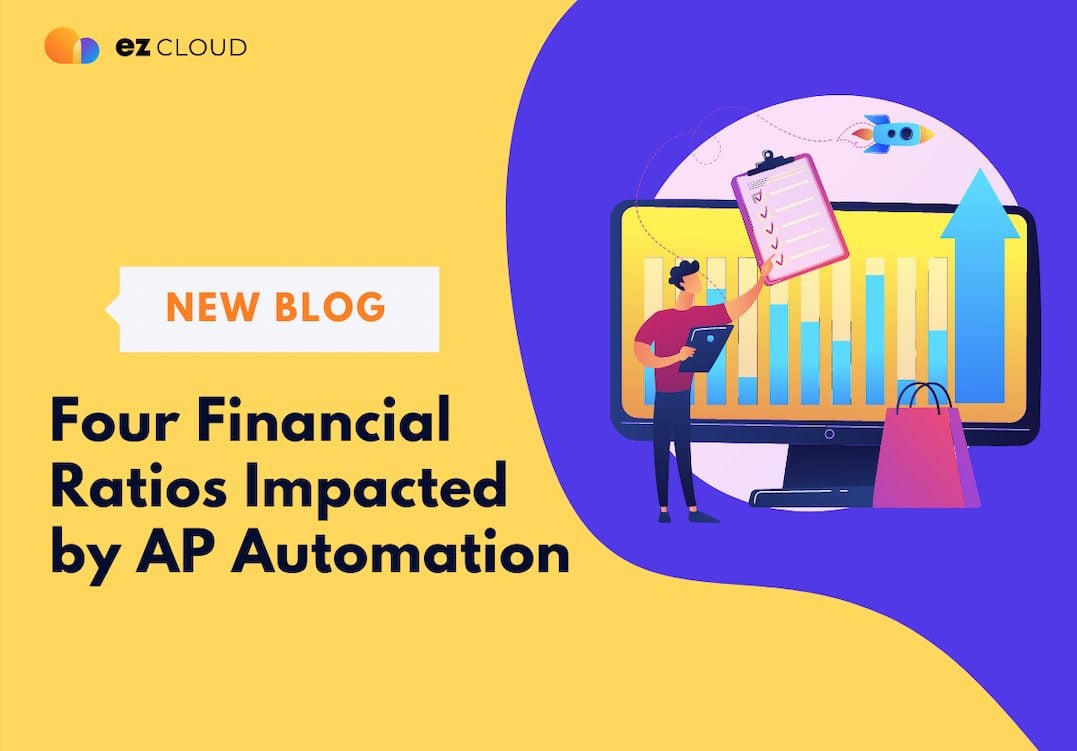AP automation and invoice processing software favorably impact financial ratios, which can mean the difference between getting a loan or needing to make cutbacks. The company’s stakeholders also use ratios to determine how efficiently the AP department is functioning both historically and currently. The impression of your management and leadership abilities is tied to the ratios of the AP department you oversee.
Here are four financial ratios that AP automation and invoice processing software directly impact.
Accounts Payable Turnover
This short-term liquidity ratio is of particular interest to lenders. AP automation may decrease this ratio by increasing the number of invoices processed during each payment run. This means fewer payments made to your vendors. Invoice processing software makes each payment cycle more efficient when multiple invoices per vendor are approved.
However, a higher value isn’t necessarily bad and could indicate a company is taking advantage of early-pay discounts, or a younger company is building its credit history (1). In this case, AP automation assists in this objective by providing transparency into what invoices need to be paid weekly or monthly to continue demonstrating credit worthiness to vendors.
Days Payable Outstanding
Your days payable outstanding (DPO) directly correlates to how long it takes on average for a payment to go out the door. The goal is to keep this ratio balanced within your industry’s normal limits (2).
AP automation can shorten the invoice life cycle, decreasing the DPO. A higher DPO could throw a false red flag that your company has cash flow issues. The visibility invoice processing software offers during the AP process can also ensure that a low DPO value isn’t resulting from failure to utilize vendor credit terms (2).
Percentage of Duplicate Payments Processed
As many as two percent of all vendor disbursements are either duplicated, paid to the wrong vendor, or paid at the wrong amount (3). Invoice processing software scrutinizes invoices to flag outlier exceptions and invoices with nearly identical information as invoices that have already been paid.
AP automation also decreases the time required for staff to research and resolve duplicate payment issues, as concerns are detected during the processing cycle before payment.
Percentage of Qualifying Discounts Taken
This ratio is easiest to evaluate, as it should be as close to 100 percent as possible. However, if vendors offer terms that aren’t feasible, such as one net five, they should be excluded from this metric (4).
Invoice processing software tightens up the invoice life cycle so payments can go out the door in time to capture early pay discounts. AP automation opens up a world of quicker payment possibilities other than a check, like ACH, wire payments, or p-card payments, eliminating delivery delays from the post office.
Invoice processing software is a strong tool that keeps your accounts payable financial ratios in line with industry standards. This ensures your business is performing competitively with other firms and that your AP team is functioning at an optimal level.
Reserve your appointment for a demo today so that you can generate healthier ratios tomorrow.
Resources




